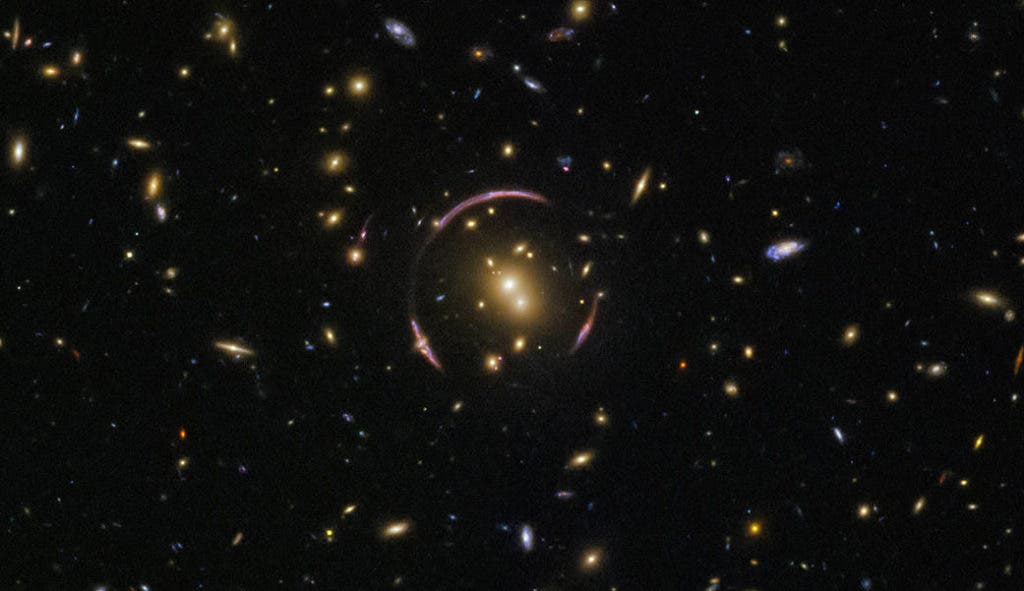The new picture snapped by the Hubble Telescope and analyzed by NASA scientists is jam-packed with galaxies — and among them, there’s an even more spectacular feature: a so-called Einstein Ring.
This charming part of the universe is called SDSS J0146-0929, a galaxy cluster which features a great variety of spiral and elliptical galaxies presented to us at different angles — some are face-on, some are angled, but all are locked together by the inescapable tug of gravity. But here, gravity does even more than just hold the galaxies together: it bends light in a way that creates a ring-like feature, a so-called Einstein Ring.
Einstein’s ring occurs when light coming from a bright source is bent by the gravitational effect of a very large structure or object — in this case, SDSS J0146-0929. The phenomenon is called gravitational lensing and requires that the three participants (the light source, the massive structure, and the observer — which is Earth) be aligned in a straight-line configuration of called a syzygy.
In this sense, an Einstein Ring is a special case of gravitational lensing, caused by the exact alignment of the source, lens, and observer. This results in a symmetry around the lens, causing a ring-like structure. NASA’s Karl Hille describes the image:
“In this image, the light from a background galaxy is diverted and distorted around the massive intervening cluster and forced to travel along many different light paths toward Earth, making it seem as though the galaxy is in several places at once.”
Einstein predicted this phenomenon back in 1912, even before his theory of general relativity. However, Einstein didn’t think we’d ever be able to observe one because our technology wasn’t capable of it. Well, our technology has progressed way beyond what Einstein thought possible and today, hundreds of gravitational lenses are currently known. In recent years, astronomers have used gravitational lensing to zoom in on extremely distant parts of the universe.
Just a few days ago, scientists published a study in which they described the farthest start ever observed, and in late 2017, a different team found a planet so big that it might not be a planet after all.
If you think this is awesome (and it is), I’ve got something even more amazing: a few years ago, Hubble snapped a spectacular image of a double Einstein’s ring — an extremely unlikely scenario which astronomers were lucky to witness.










